'When you are blind, your physical world is only as far as your arms can reach, but with my guide dog, my world is limitless'
Tubby little bundles of joy, guide-dog puppies may be irresistibly sweet, but they’ve been expertly engineered to perform life-changing duties, discovers Katy Birchall.


Watching Miller, a guide dog in training, calmly and confidently lead his handler around a purpose-built obstacle course, you’d assume there is nothing that might cause his remarkable focus to waver — but you’d be wrong. ‘He does have one weakness we’re still working on: squirrels,’ his handler, Gemma Eley, smiles. ‘If one darts out, he’ll turn to look — he’s learning to remain engaged with me despite distraction.’
A 17-month-old, labrador-golden retriever cross, Miller was born to be a guide dog — and that’s not merely a turn of phrase. He is part of the world-class breeding programme established by the Guide Dogs for the Blind Association, a project that combines pioneering technology of dog genetics with the passion and devotion of the charity’s staff and volunteers to produce happy, healthy and life-changing guide dogs.
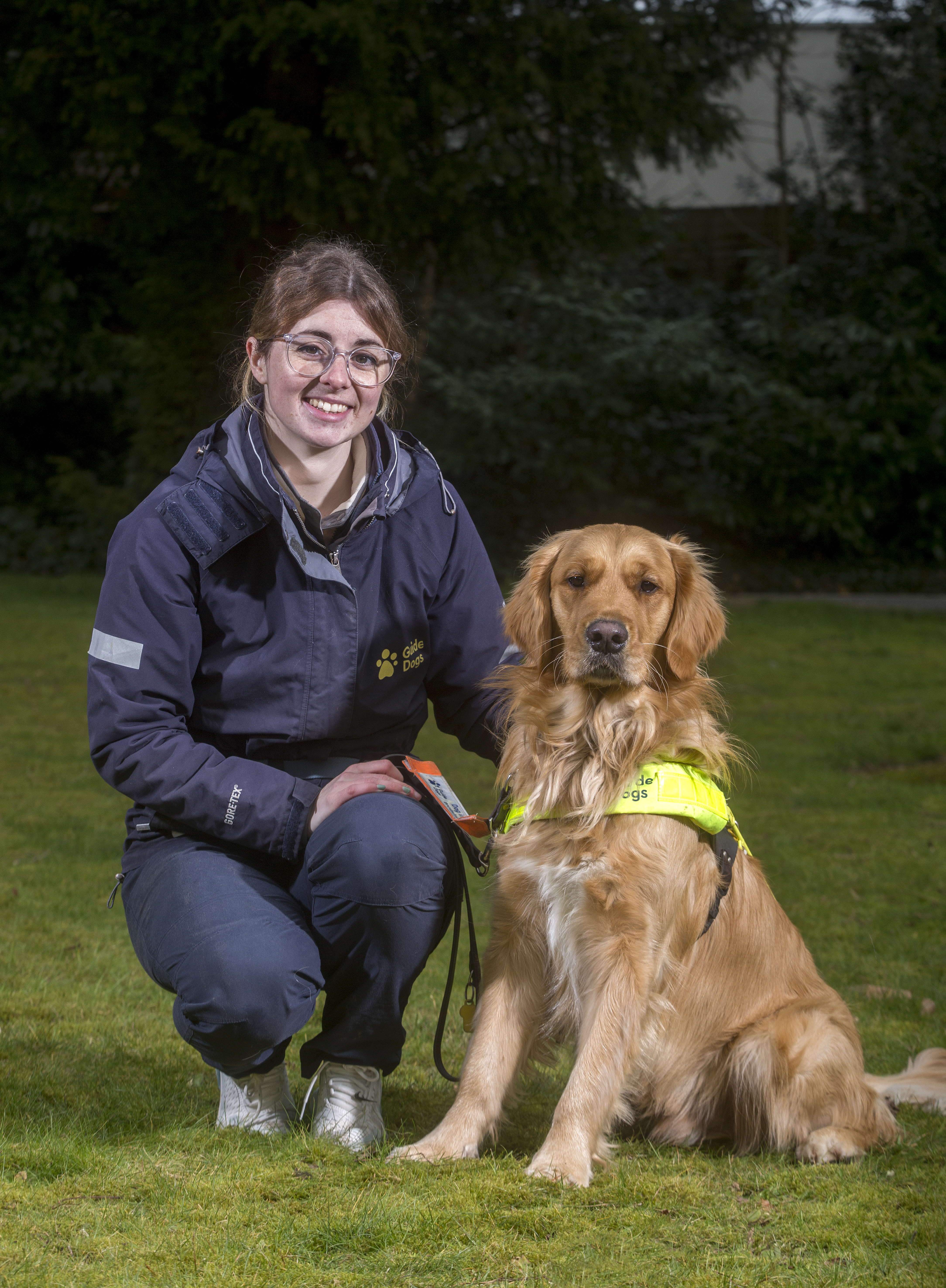
Miller with his handler, Gemma Eley.
‘Miller was born to guide-dog parents, Honey and Errol,’ explains Eley, who has encyclopaedic knowledge of the family history of each dog she trains. ‘He’s a fast learner, he’s patient and he’s comfortable with the harness. He’s building the confidence to make judgement calls — the dogs have to learn not to follow a cue if it would lead their owner into a dangerous situation they’re unaware of.’
In a few months’ time, the L plates will come off and Miller will be fully qualified, ready to be matched with his new companion. ‘It is always sad to say goodbye,’ admits Eley. ‘A mobility specialist and I work with the dog and their new partner for at least five weeks to ensure they’re both happy and their partnership is progressing confidently. I feel proud to have made a small imprint on their journey.’
Each guide dog’s story begins at the National Centre in Warwickshire, a vast, state-of-the-art building designed to house the team of researchers that gathers and examines genetic data to understand better and protect the health and behaviour of the future guide-dog population.
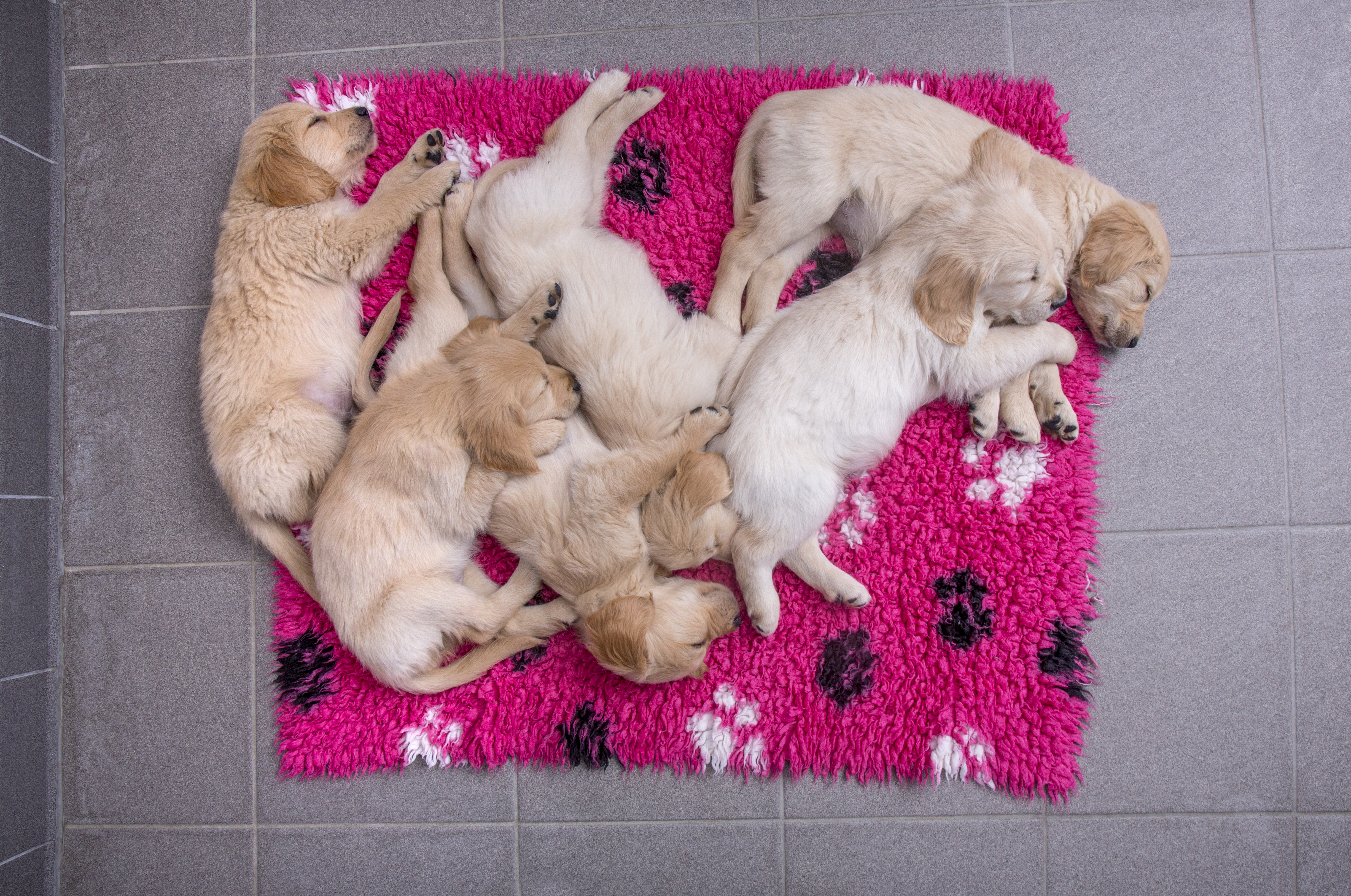
A puppy pile at the Guide Dog National Centre in Warwickshire.

‘We’re concerned with ensuring we produce enough healthy puppies that are suited to go into training and become guide dogs, but also that we have a breeding population over the next few decades, too,’ notes Tom Lewis, breeding and genetics lead. ‘We’re managing genetic diversity and the sustainability and viability of that further down the line — it’s a lot of planning.’
The gathered data helps Dr Lewis and his team to identify behavioural patterns and select against diseases or disorders that can be common in certain breeds. ‘Through family trees and ancestry records, we’re able to get good estimates of genetic risk for those diseases — for example, hip dysplasia — that can be a problem in labradors,’ he explains. ‘We can also DNA test for some disorders and ensure we never put two dogs together that are carriers of the same disease. We’re shifting the genetic merit in the right direction, which improves health over time. Ultimately, we want our dogs to have a long, successful working career and a long, happy retirement, too.’
Exquisite houses, the beauty of Nature, and how to get the most from your life, straight to your inbox.
A post shared by Guide Dogs (@guidedogsuk)
A photo posted by on
The dogs used for breeding are the stars of the programme. ‘It’s a common misconception that guide-dog parents are ones that didn’t make the grade in training, but, actually, we select the best dogs for the breeding programme first,’ confirms data manager Becky Hunt. Guide-dog dams live with volunteers, who bring their brood bitch into the centre for mating. ‘We have reproduction specialists who determine the optimum time so we can enhance the chance of a natural conception,’ says Hunt. This has proved hugely successful, with a conception rate of about 95%. An on-site cryogenic store offers the chance to collaborate with international assistance-dog programmes — the export and import of semen helps to manage genetic diversity.
‘Choosing the right sires is a long, thorough process,’ Hunt continues. ‘We study the family history and health, looking for attributes that might complement the dam. We want variety in our pups — size, breed, temperament — because our clients are all different. We’re producing dogs for every type of home.’
After being closely monitored throughout her pregnancy, the brood bitch will ideally give birth at home, but if there are any complications, she will be brought into the centre where there are on-site vets and specialist units. ‘We have staff on hand around the clock to help the dogs that give birth here and to provide support to volunteers over the phone or go out to them if needed,’ reveals Janine Dixon, breeding and welfare lead. ‘We like the pups to be born at home so they experience that environment and become accustomed to everyday sounds, but we can replicate that for the litters born here. The puppies stay with their mothers until they’re eight weeks old and then they come to us for health checks, vaccinations and microchips.’
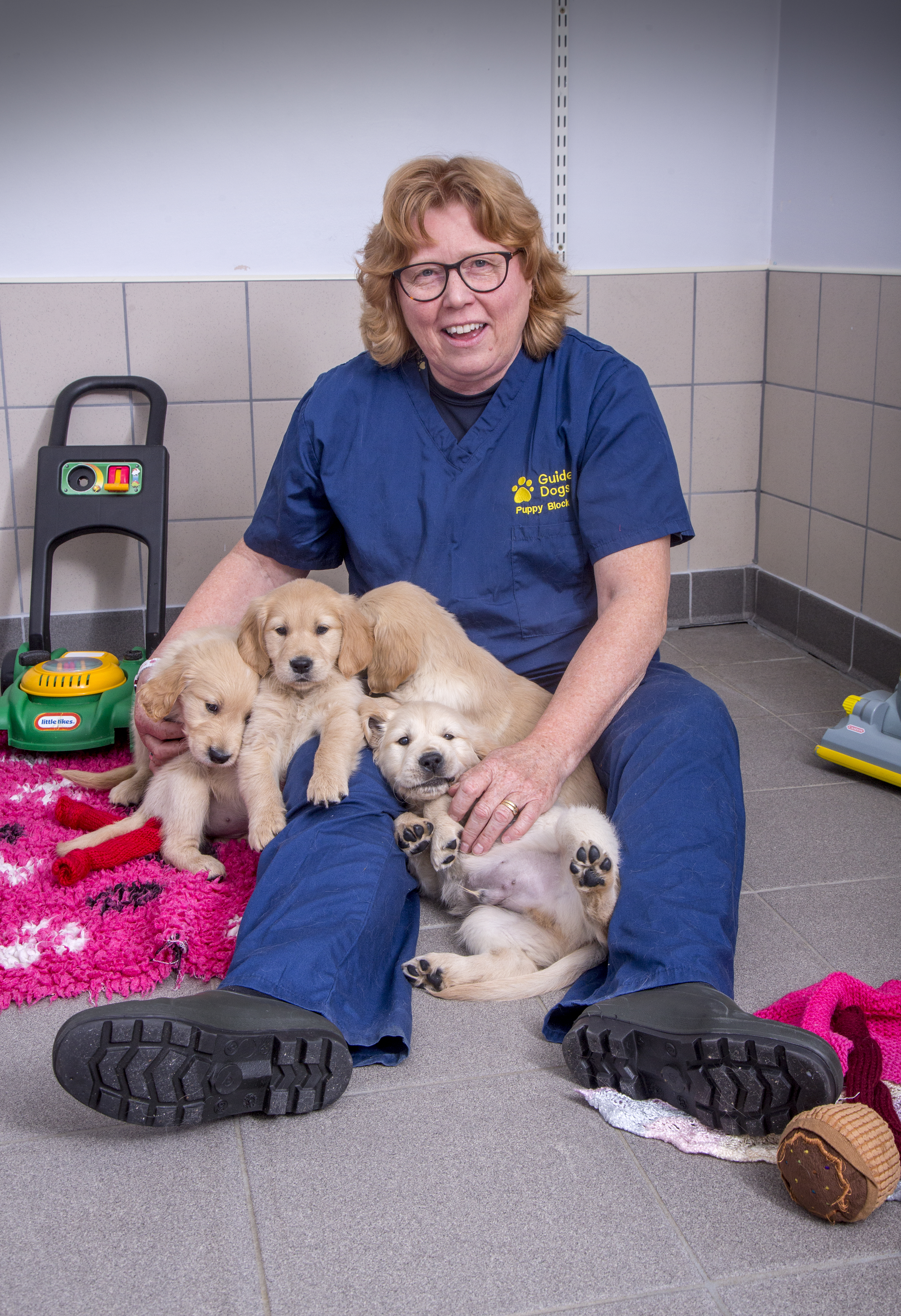
Janine Dixon, the breeding and welfare lead at the Guide Dog Centre.
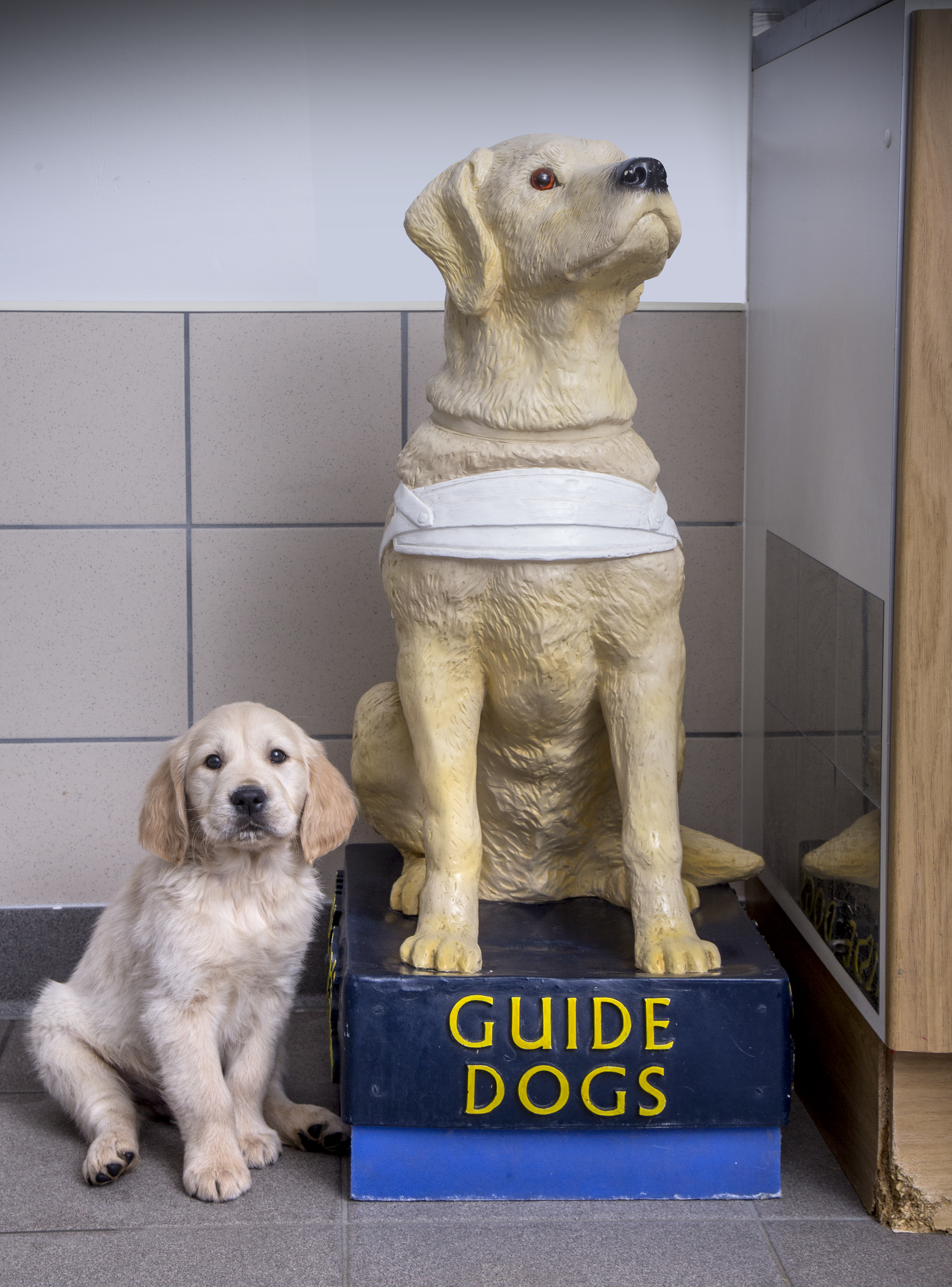
Becoming the best: training at a glance
Guide dogs are trained using positive reinforcement, focusing on rewarding them for the right responses to verbal, visual and environmental cues
Learning to settle — The first few weeks of formal training involve encouraging the dog to be calm and to learn to settle, as well as bolstering basic commands, such as recall, with a motivating reward — food, verbal praise or a favourite toy
Equipment — The harness is introduced by simply showing it to the dog and then offering a reward. The trainer will build on that positive association until they can hold the harness out and the dog steps in unaided
Marker training — Guide dogs are taught to associate a marker sound, such as a verbal cue or clicker, with a reward. The marker is used at the exact moment the dog performs the correct behaviour, followed by the reward
Introducing distractions — Trainers start by setting up an easy distraction at a distance, rewarding the dog if it walks straight past. The task gradually becomes more challenging by reducing the distance and using a more tempting distraction
At this point, the ‘puppy raisers’ step in: volunteers who will take a puppy home for 12-16 months. ‘It’s an incredible experience,’ enthuses Jane Kempton, a former puppy raiser and now the volunteer owner of brood bitch Abbey. ‘You offer the puppy a loving home, teach basic manners and introduce them to various environments as you go about your life.’ There is the inevitable heartache when the dog leaves to begin formal training, but Kempton emphasises that the reward outweighs it. ‘I’m immensely proud of what they have gone on to do. It’s a privilege to be a part of it.’
Now retired, seven-year-old labrador Abbey has had three litters, producing a total of 16 puppies, some of which are successful guide dogs and some that have gone on to be bred from. ‘The charity is so supportive when it’s time for the brood bitch to give birth. They provide everything — all the equipment, food costs and veterinary care — and they guide you through the process. To bring those lives into the world is magical,’ Kempton smiles.

Jane Kempton, a former puppy raiser with some of Abbey's puppies.
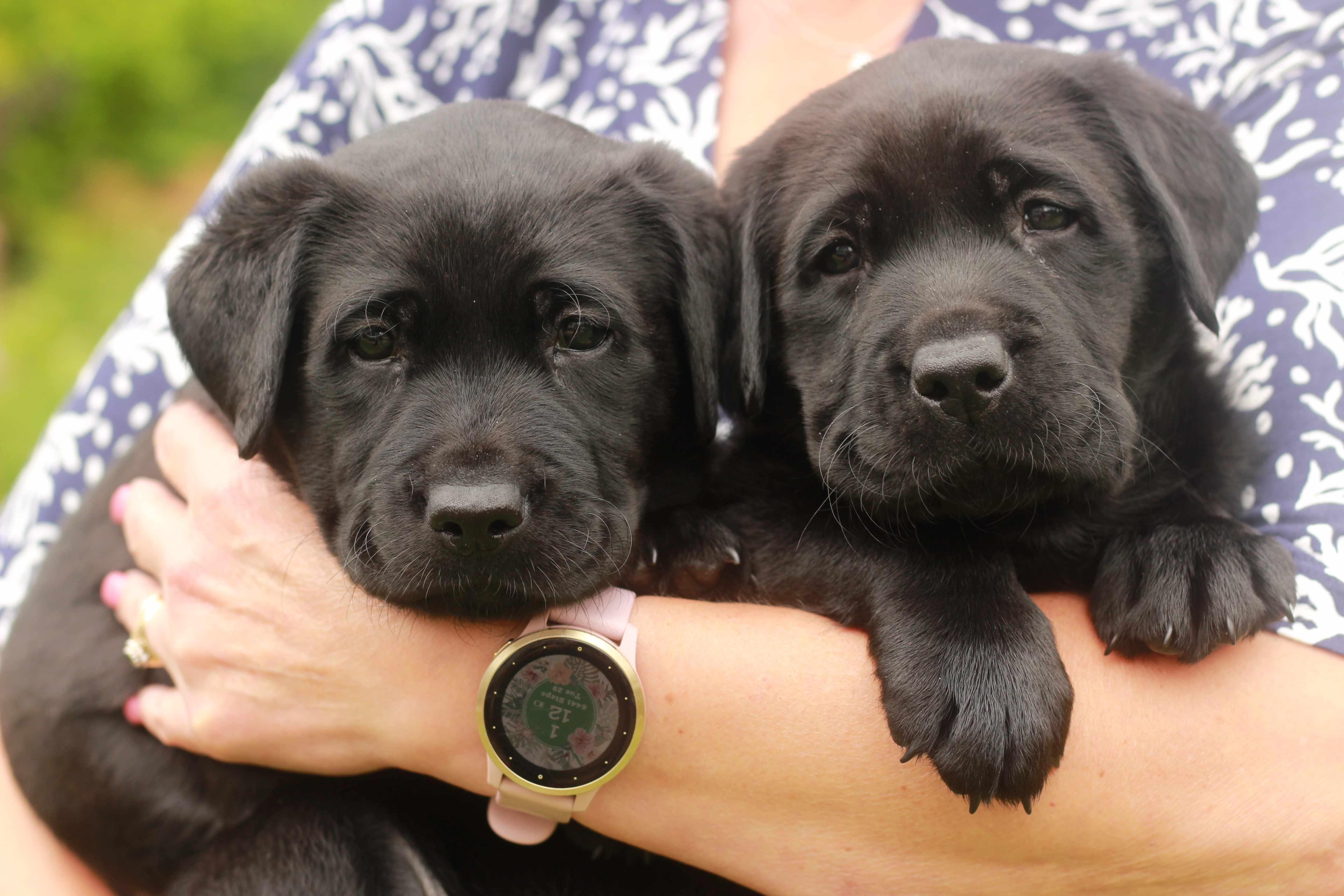
For international dressage rider, singer and author Verity Smith, guide dog Luna is a gift. ‘So much hard work goes into raising and training these amazing dogs that wear a harness and I can’t say thank you enough to all the people who contribute — a guide dog gives somebody their life,’ she says. ‘When you are blind like me, your physical world is only as far as your arms can reach, but with my guide dog, my world is as limitless as I choose it to be. I can embrace adventure; I don’t have to brace for a fall.’
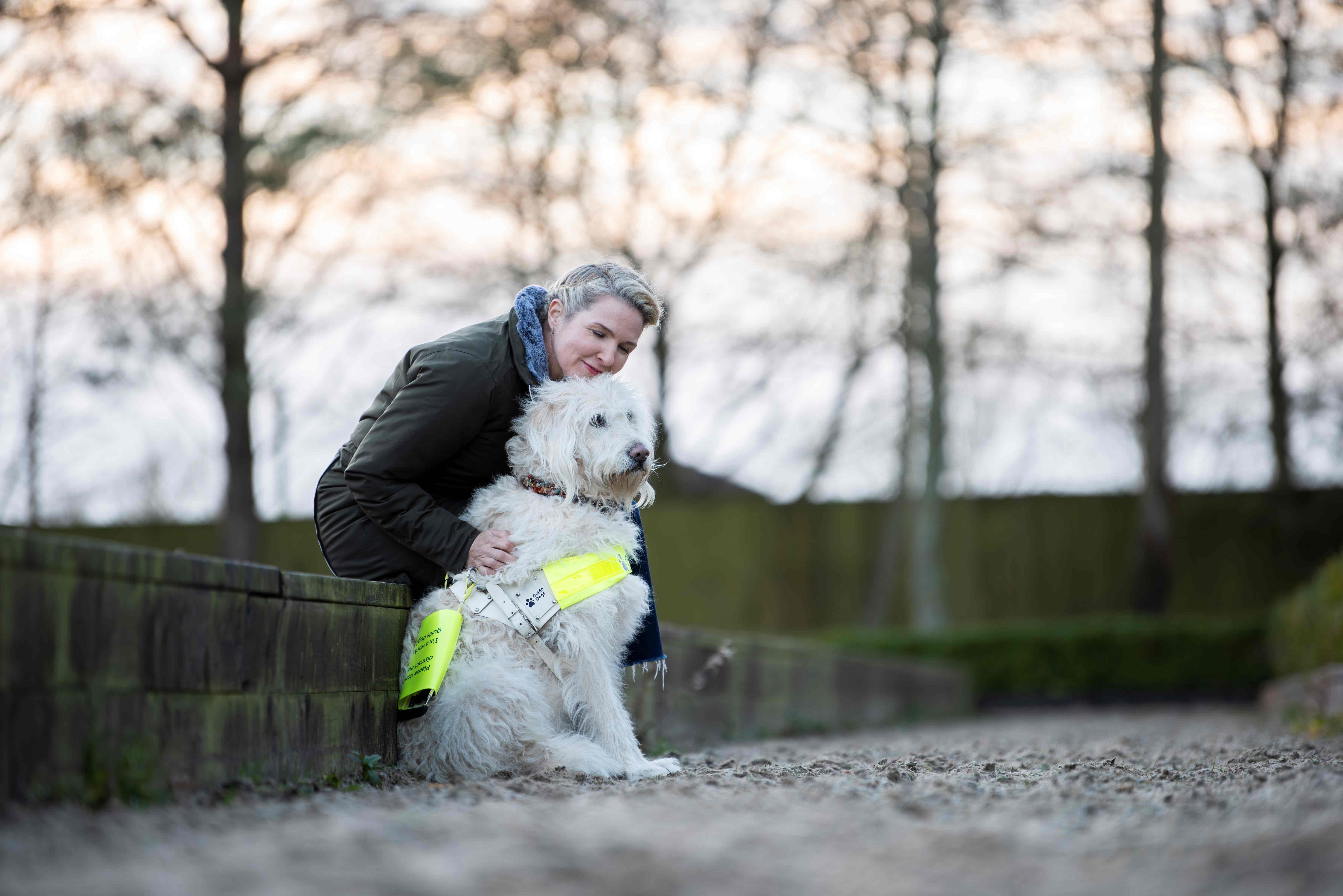
Verity Smith with her guide dog, Luna.
Guide dogs in numbers
In 2024, the Guide Dogs for the Blind Association…
- Created 518 partnerships
- Placed 1,256 puppies with puppy raisers
- Accepted 123 puppies into the breeding pool
There are currently…
- 334 breeding dogs in the programme
- 494 dogs in training, with a qualifying rate of 66%
- 3,197 working partnerships
- 347 buddy dogs for children with visual impairments
For information on volunteering with the Guide Dogs for the Blind Association visit their website or telephone 0345 143 0191 .
Katy Birchall is a journalist and the author of several young adult and teen novels, including The It Girl series and the Hotel Royale series. She has written a retelling of Jane Austen’s Emma for the Awesomely Austen series and the Netflix spin-off novel Sex Education: The Road Trip. She is also the author of several romantic comedies for adults including The Secret Bridesmaid and The Wedding Season. She writes romantic fiction for young adults under the name Ivy Bailey, romantic-comedy under the name Katrina Logan, and romantic sports fiction for adults under Katherine Reilly. She lives in London with her husband, daughter and rescue dog.
